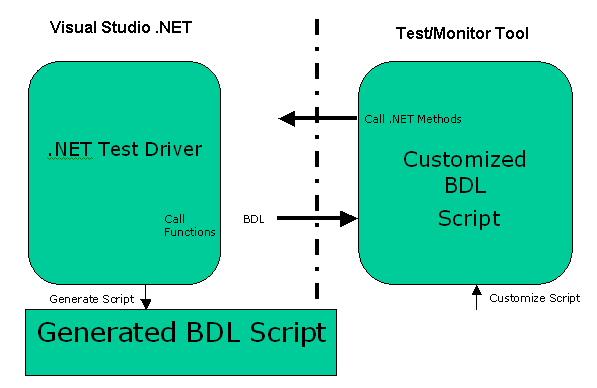Silk Performer .NET Framework Overview

The Silk Performer .NET Framework integration allows you to instantiate .NET objects and then call methods on them.
The Microsoft .NET Common Language Runtime (CLR) is hosted by the Silk Performer virtual user process when BDF scripts contain DotNet BDL functions.
HTTP/HTTPS traffic that is generated by instantiated .NET objects can be routed over the Silk Performer Web engine. Each WebRequest/WebResponse is logged in a TrueLog, allowing you to see what is sent over the wire when executing Web service and .NET Remoting calls.
Depending on the active profile setting, which is a .NET application domain setting, either each virtual user has its own .NET application domain where .NET objects are loaded, or alternately all virtual users in the process can share an application domain.
A .NET application domain isolates its running objects from other application domains. An application domain is like a virtual process where the objects running in the process are safe from interruption by other processes. The advantage of having one application domain for each virtual user is that the objects that are loaded for each user don't interrupt objects from other users, since they are isolated in their own domains.
The disadvantage is that additional application domains require additional administrative overhead of the CLR. This overhead results in longer object-loading and method-invocation times.